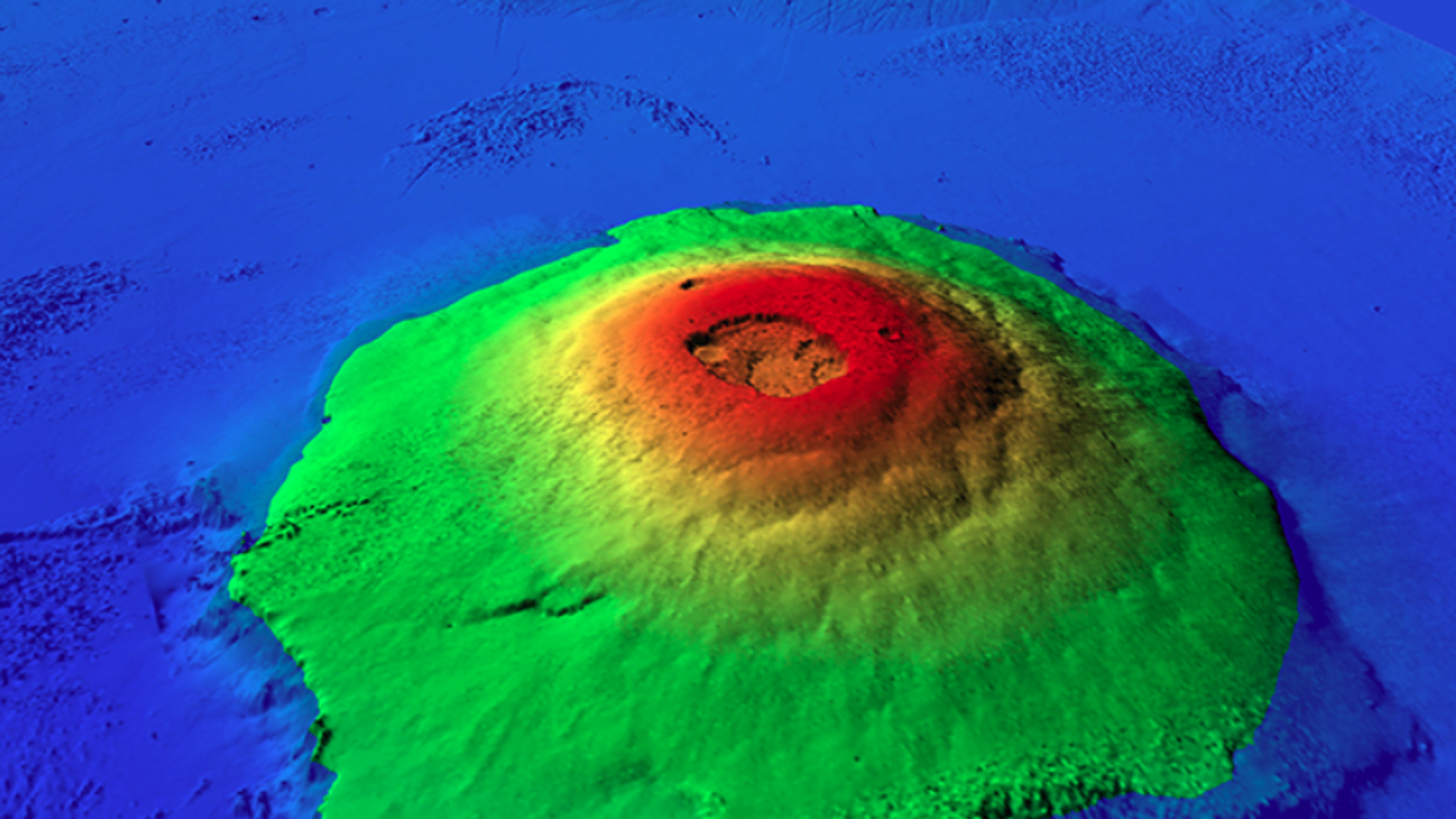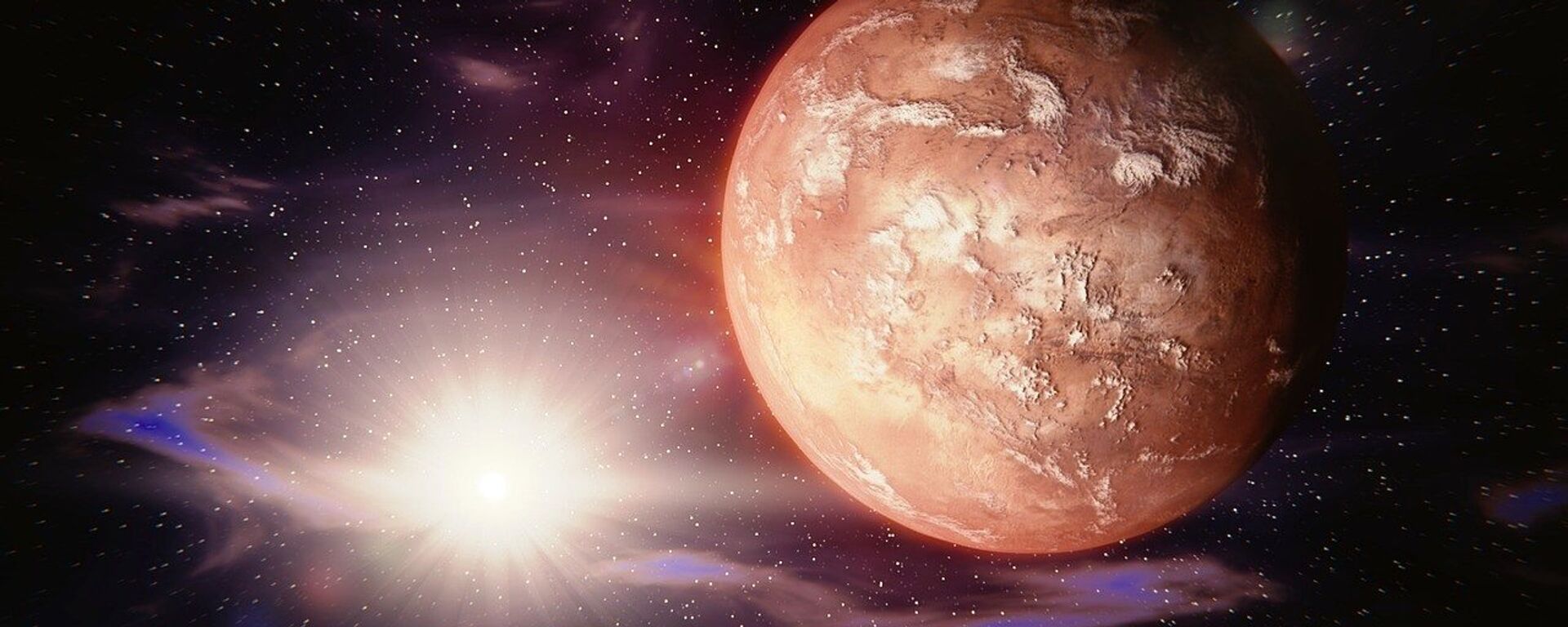https://sputnikglobe.com/20230728/giant-martian-volcano-could-be-island-in-ancient-times--study--1112204496.html
Giant Martian Volcano Could Be Island in Ancient Times – Study
Giant Martian Volcano Could Be Island in Ancient Times – Study
Sputnik International
When dealing with the research, scientists looked at similar volcanos on Earth to get the better understanding of Olympus Mons, which is 624 km in diameter, roughly the same size as the US state of Arizona or Poland.
2023-07-28T06:23+0000
2023-07-28T06:23+0000
2023-07-28T06:23+0000
beyond politics
portugal
france
canada
us
scientists
study
mars
volcano
https://cdn1.img.sputnikglobe.com/img/07e7/07/1c/1112204337_0:13:854:493_1920x0_80_0_0_97c7492b6bee4ac200f903225663d426.png
The colossal Olympus Mons shield volcano located on Mars could once have been an island in an ancient ocean on the Red Planet, a new study has revealed."We propose that the upper rim of the 6-kilometer high concentric main escarpment surrounding Olympus Mons most likely formed by lava flowing into liquid water when the edifice was an active volcanic island during the late Noachian–early Hesperian," the scientists added.The Noachian and the Hesperian are geologic systems and time periods pertaining to Mars, which approximately correspond to between 4.1 and 3.7 billion years ago.The researchers finally discovered that the shorelines of these islands have sharp escarpments, similar to those that ring Olympus Mons. "This leads us to propose that Olympus Mons was a former volcanic island surrounded by liquid water," the scientists pointed out.They stressed that the findings would help provide “valuable insights into the timing and fate of Martian Oceans” and the history and evolution of the Red Planet on the whole.
https://sputnikglobe.com/20230429/seismic-waves-rippling-through-mars-core-offer-clue-about-how-it-became-hostile-to-life-1109942602.html
portugal
france
canada
mars
Sputnik International
feedback@sputniknews.com
+74956456601
MIA „Rossiya Segodnya“
2023
Oleg Burunov
https://cdn1.img.sputnikglobe.com/img/07e4/09/0b/1080424846_0:0:2048:2048_100x100_80_0_0_3d7b461f8a98586fa3fe739930816aea.jpg
Oleg Burunov
https://cdn1.img.sputnikglobe.com/img/07e4/09/0b/1080424846_0:0:2048:2048_100x100_80_0_0_3d7b461f8a98586fa3fe739930816aea.jpg
News
en_EN
Sputnik International
feedback@sputniknews.com
+74956456601
MIA „Rossiya Segodnya“
Sputnik International
feedback@sputniknews.com
+74956456601
MIA „Rossiya Segodnya“
Oleg Burunov
https://cdn1.img.sputnikglobe.com/img/07e4/09/0b/1080424846_0:0:2048:2048_100x100_80_0_0_3d7b461f8a98586fa3fe739930816aea.jpg
olympus mons, martian volcano, volcanic island, red planet, ancient ocean, study on mars
olympus mons, martian volcano, volcanic island, red planet, ancient ocean, study on mars
Giant Martian Volcano Could Be Island in Ancient Times – Study
When dealing with the research, scientists looked at similar volcanos on Earth to get a better understanding of Olympus Mons, which is 624 km in diameter, roughly the same size as the US state of Arizona or Poland.
The colossal Olympus Mons shield volcano located on Mars could once have been an island in an ancient ocean on
the Red Planet, a new study has revealed.
A team led by geoscientist Anthony Hildenbrand of Paris-Saclay University in France wrote that their research shows that Olympus Mons - the biggest volcano in the Solar System – “shares morphological similarities with active volcanic islands on Earth where major constructional slope breaks systematically occur at the sea-air transition in response to sharp lava viscosity contrasts.”
"We propose that the upper rim of the 6-kilometer high concentric main escarpment surrounding Olympus Mons most likely formed by lava flowing into liquid water when the edifice was an active volcanic island during the late Noachian–early Hesperian," the scientists added.
The Noachian and the Hesperian are geologic systems and time periods pertaining to
Mars, which approximately correspond to between
4.1 and
3.7 billion years ago.
Hildenbrand and his colleagues explained that they had recontextualized Olympus Mons by looking at similar volcanic islands on Earth. These included Pico Island in Portugal, Fogo Island in Canada, and the island of Hawaii in the US.
The researchers finally discovered that the shorelines of these islands have sharp escarpments, similar to those that ring Olympus Mons. "This leads us to propose that Olympus Mons was a former volcanic island surrounded by liquid water," the scientists pointed out.
They stressed that the findings would help provide “valuable insights into the timing and fate of Martian Oceans” and the history and evolution of the Red Planet on the whole.




